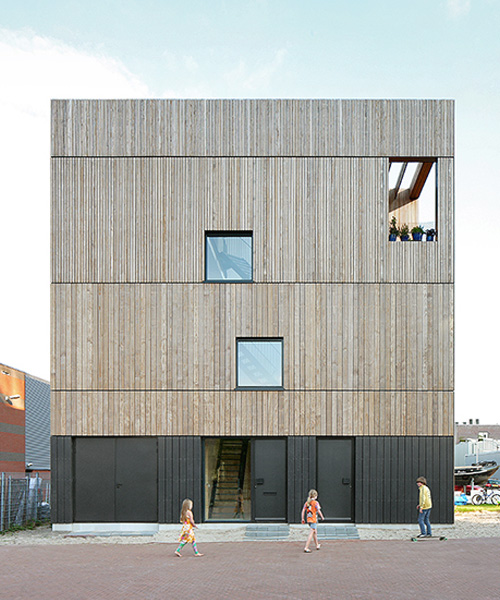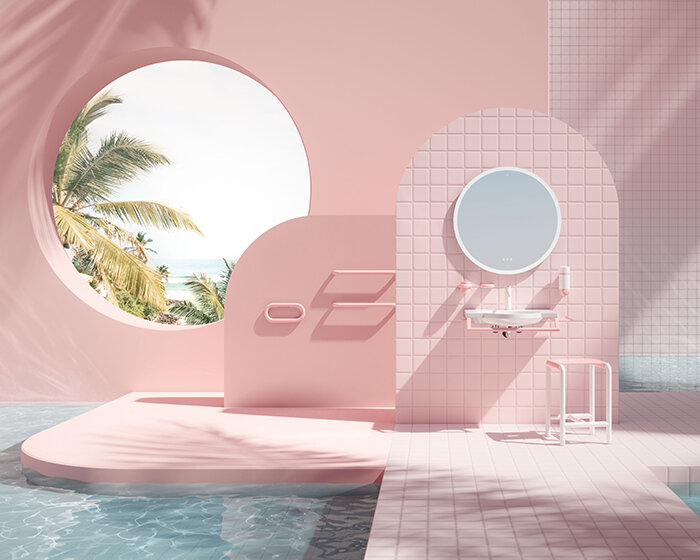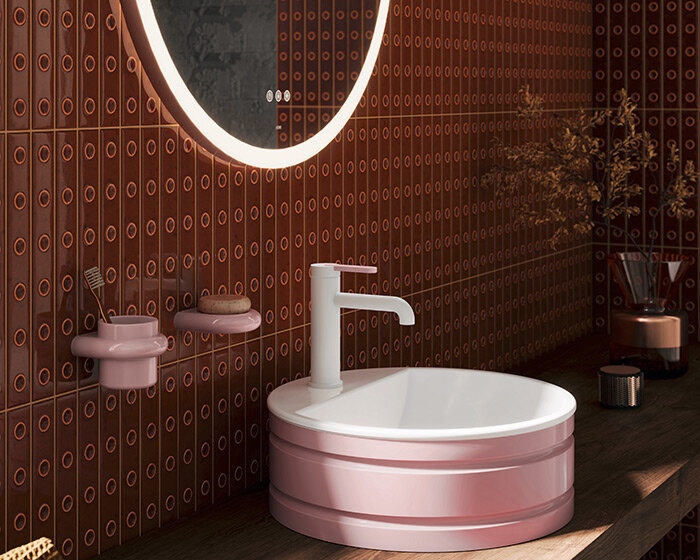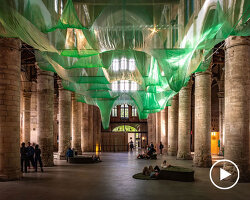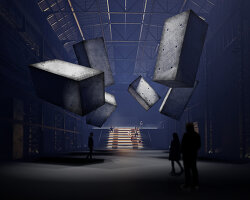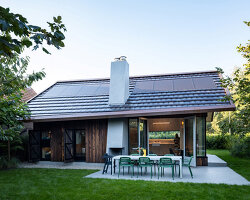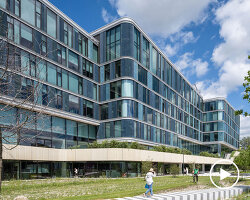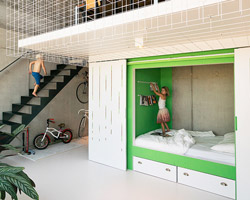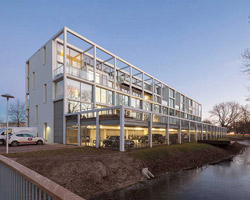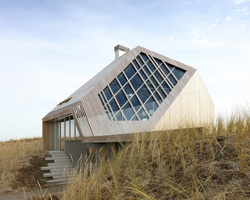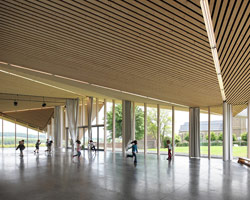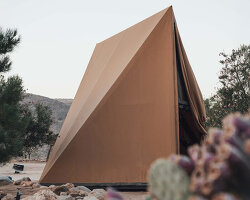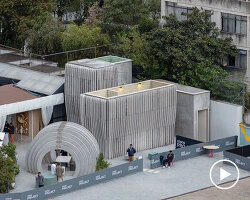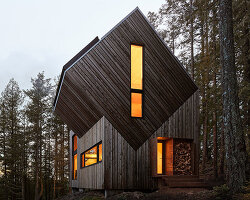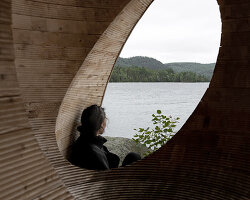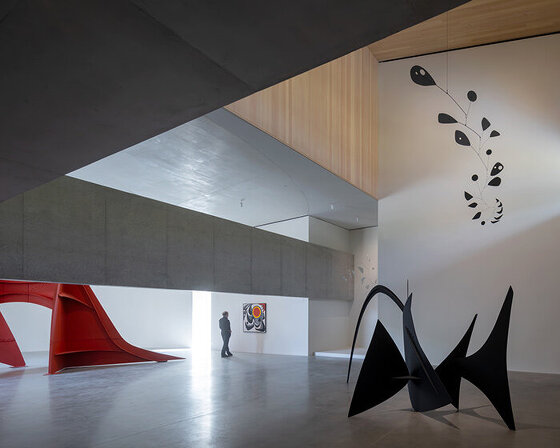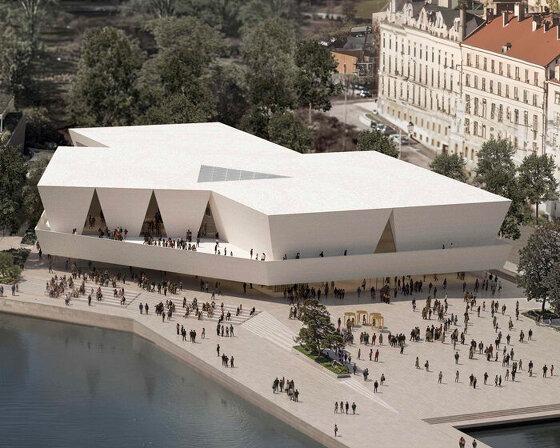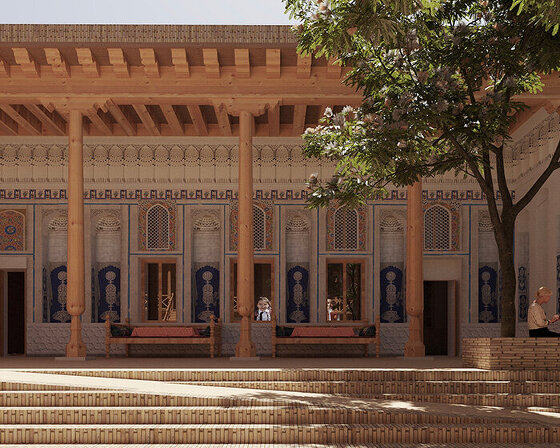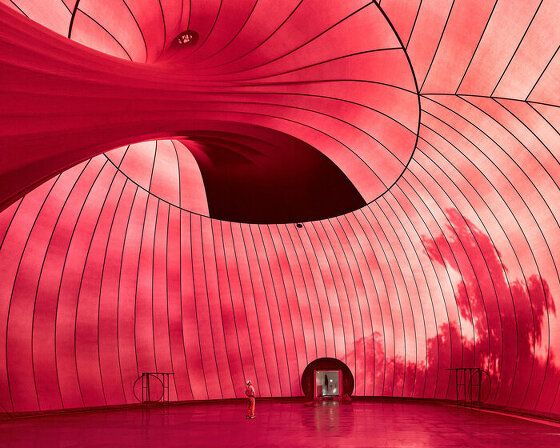situated in an industrial neighborhood of amsterdam,the prefabricated lofthouse I is an unusual residential gem. developed by marc koehler architects (MKA), the project is the first implementation of a series of durable wooden lofts and is based on an unusual reversed principle that defies typical housing typologies. in other words, owners have decided to sleep downstairs and go about their daily rituals upstairs where they can fully enjoy the views of the harbor from the kitchen, lounge and dining room.

a ‘transparent’ facade allows owners to fully enjoy views of the harbor from the living spaces
(above and main) image © filip dujardin / courtesy of marc koehler architects
what truly makes the project stand out is its prefabricated wooden construction influenced by the ‘superlofts’ concept, previously developed by marc koehler architects in amsterdam. but for lofthouse I, the building system has been optimized and further expanded to create an evolutionary prototype. the wooden structure also serves as a framework in which floors can be installed in any position, giving the entire house a flexible layout. in addition, this approach shortens the construction period considerably, to just six months: realizing the prefab elements in a closed workshop took two only weeks, and assembling them on site took no more than four days.
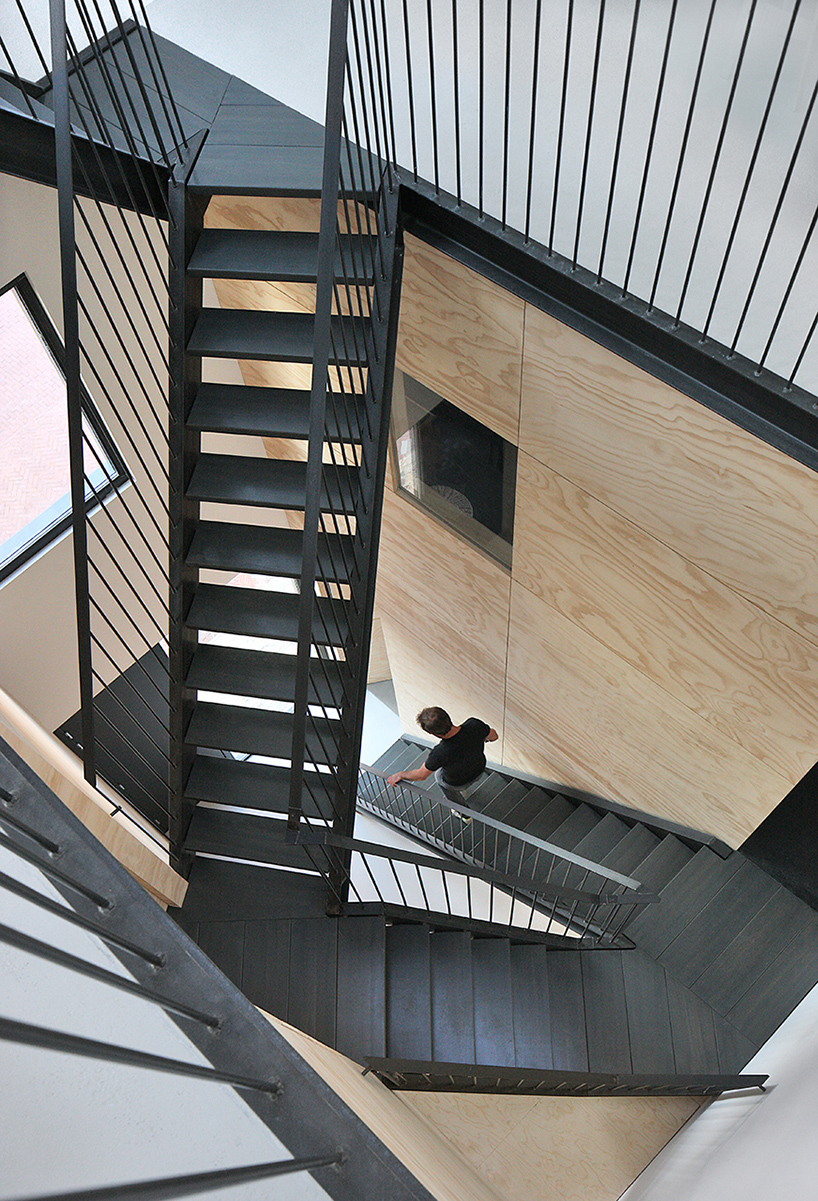
the staircase is central design feature of the house, creating one continuous flow between floors
image © filip dujardin / courtesy of marc koehler architects
in this corner house, all floors are interconnected in one continuous flow by incorporating a central design feature: the staircase that also serves as an atrium. another principle developed by the architects is the split-level structure where each floor is half a level higher or lower in relation to the previous or the next, giving owners a clear view between different floors. this approach creates a gradual interior transition, as opposed to the clean break found in typical terraced houses. thanks to the combination of the atrium, staircase and split-level structure, the different levels come together as one.
on the other hand, bedrooms are designed like small houses within a house and are experienced as such by including windows on the staircase side — resulting in some surprising sight lines. those openings were integrated onto the facade in a playful manner to offer multiple views of the remarkable surroundings — from different points within the loft.

the stairway offers an enjoyable vertical experience
image © filip dujardin / courtesy of marc koehler architects
the industrial context has influenced the architects to design a sturdy building with large glazed surfaces and opaque black-painted hardwood frames. besides being resilient in its structure, the house also emanates a serene atmosphere with its refined wooden wall cladding and transition from coarse to fine materials — resulting in a facade with a surprising layered appearance. the exterior is covered with a preserved radiata pine softwood- nobelwood from foreco. this type of wall cladding requires no treatment, is completely maintenance-free — making it a sustainable alternative to tropical hardwood.

each floor is higher or lower then others by half, offering a clear view between different levels
image © filip dujardin / courtesy of marc koehler architects
the project finally introduces a completely climate-neutral home with PV panels on the roof, a CO2-controlled ventilation system, mechanical extraction, underfloor heating and a collective heat grid which ensures all energy consumption is kept to a minimum. theoretically, the entire house is made out of wood which is one of the most durable materials imaginable: it is light, stores CO2, does not contain any chemicals, and has a low radiation value — unlike concrete. in addition, wood absorbs moisture during wet periods and releases it when the air is dry which regulates indoor climate. this characteristic is fully utilized in the vapour-permeable or ‘breathable building’ principle: no damp-inhibiting foils are used, and all indoor moisture is released outdoors. aside from these health-related benefits, wood also provides a warm and natural atmosphere with pleasant acoustics.

extended openings significantly improve the serene atmosphere of the house by letting in more natural light
image © filip dujardin / courtesy of marc koehler architects

the reversed principle applied in this house situates all living spaces upstairs and bedrooms downstairs
image © filip dujardin / courtesy of marc koehler architects

the wooden prefab construction allows for shorter construction periods, and truly makes the house stand out
image © filip dujardin / courtesy of marc koehler architects
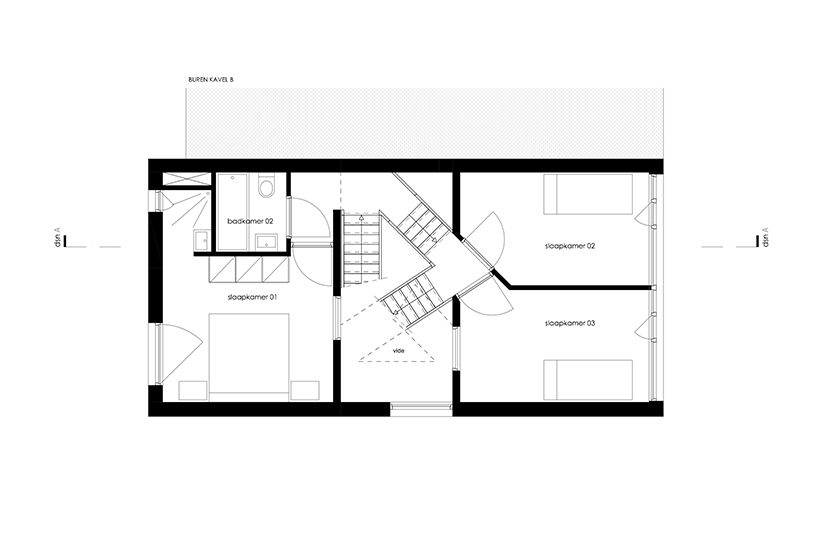
floor plan: first floor
image © marc koehler architects
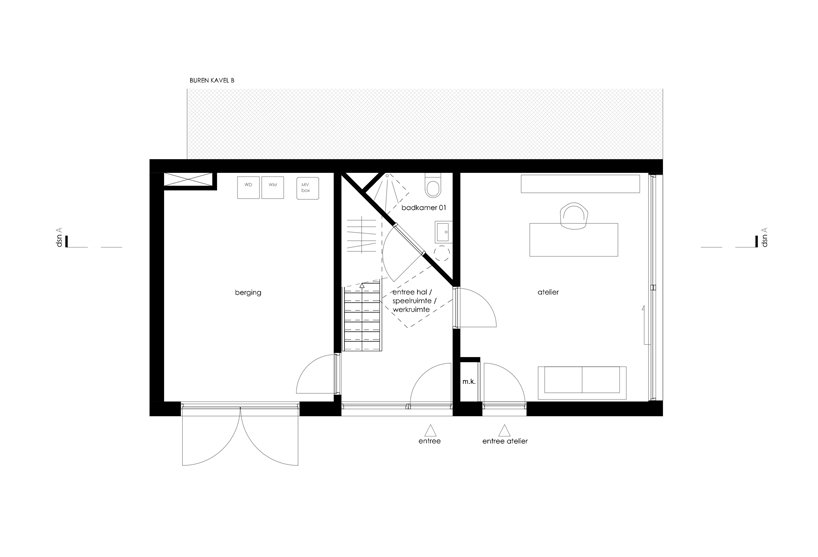
floor plan: second floor
image © marc koehler architects
designboom has received this project from our ‘DIY submissions‘ feature, where we welcome our readers to submit their own work for publication. see more project submissions from our readers here.
edited by: lea zeitoun | designboom
